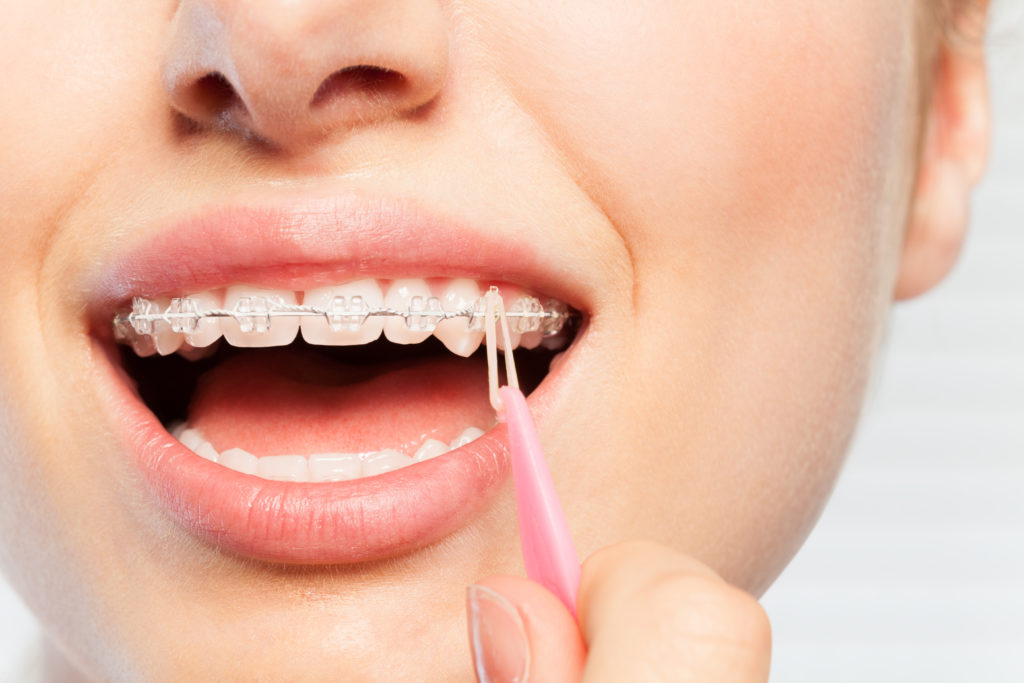
Getting braces can be a challenge. And when you add the hassle of rubber bands, we understand your frustration.
But learning why you need rubber bands and what they are doing to help straighten your teeth can make the process more bearable. Keep in mind that your braces are temporary, and your elastics are actually helpful little devices that will speed up your treatment and get you a straighter smile than braces alone.
How Braces Work
Wait, I thought we were talking about rubber bands? To understand how the elastics work, you must first grasp how your braces work. First, your brackets are fixed to each tooth with strong adhesive so they do not move.
Next, a wire is threaded through the brackets and held onto each bracket with a tiny elastic band called a ligature (not the same are the rubber band we are talking about in this article). This wire connects the brackets together. The tension in the wire works to exert force on the teeth by pulling them together. Leveraging this force by tightening the wire slowly over time, teeth will move into alignment with one another.
Why Rubber Bands?
Rubber bands can add additional force to this process but can also create force in another direction. While wires create most of their force horizontally, by connecting the upper and lower teeth, rubber bands can add vertical or diagonal force into play. Depending on their specific configuration, the rubber bands can align teeth faster and in different directions than wires and brackets alone.
One unique advantage to using rubber bands is that they allow your orthodontist to correct your bite. While braces straighten teeth, they do not usually have a significant impact when it comes to the relative position of the upper and lower jaw to one another. In other words, rubber bands help correct an overbite and other jaw misalignment issues.
How to Make Rubber Bands on Braces Work Faster
If you want to make sure your braces are effective and speed up your treatment, it is important to follow your care plan precisely, and that includes using your rubber bands. Here are our tips for rubber band wear and making sure that you’re wearing them consistently.
Wear Them Right
Our first piece of advice is to make sure you are wearing your rubber bands correctly. Pay close attention when your provider shows you where and how to insert your elastics. Ask questions if you have them (there is no need to be embarrassed-we know you are new to this!) and practice with your provider’s help. Ask for a placement tool to help if you are having trouble using your fingers.
Incorrect placement can reverse your progress. Your orthodontist may place different colored ligatures to show you which tooth to hook the wire to, draw you a “map” of your teeth, or you can even just take a quick photo with your phone to reference at home.
Keep Them in All Day
Make sure you wear your rubber bands the entire day, even while eating and sleeping. You should only remove them to brush and floss unless your orthodontist instructs you otherwise. Just missing a few hours a day can seriously halt your progress.
If you miss time for whatever reason, do NOT double up to make up for it. This can also slow your progress. Just get back on track as soon as you can.
Change Them Often
Your orthodontist will instruct you on how often to change your rubber bands. Follow these instructions and set an alert on your phone if you need to so you don’t forget! Keep extra rubber bands on hand so you can change them when needed, even on the go.
Call Us With Any Questions
Getting used to your rubber bands will take some time, but don’t worry; they will feel much less awkward after you wear them for a few days.
If you have any questions about your rubber bands, remember we are here to help. Call our office or ask at your next visit!





